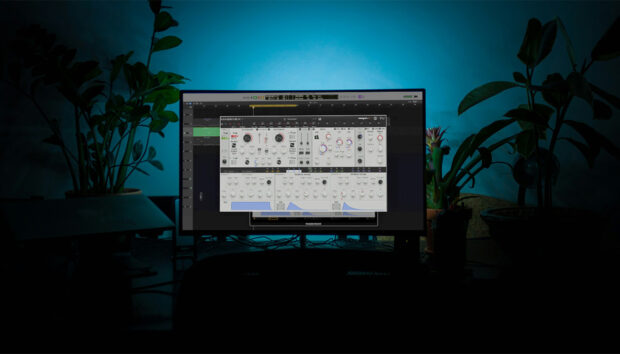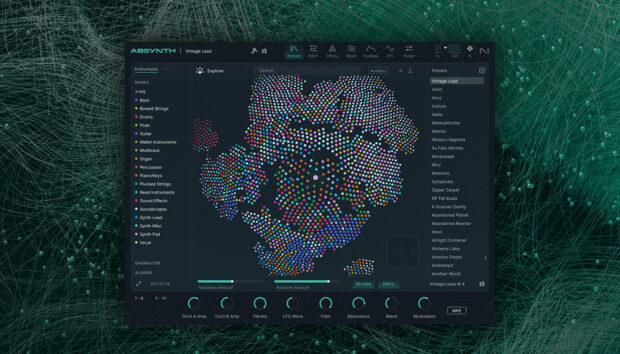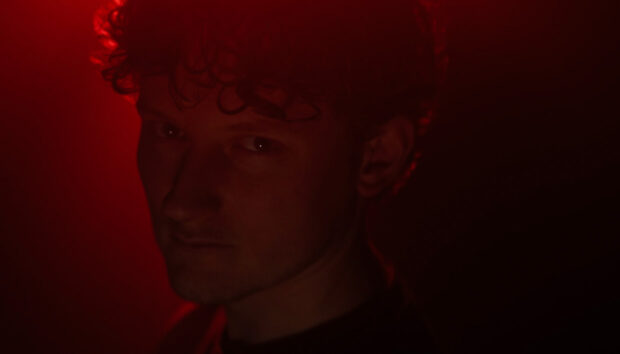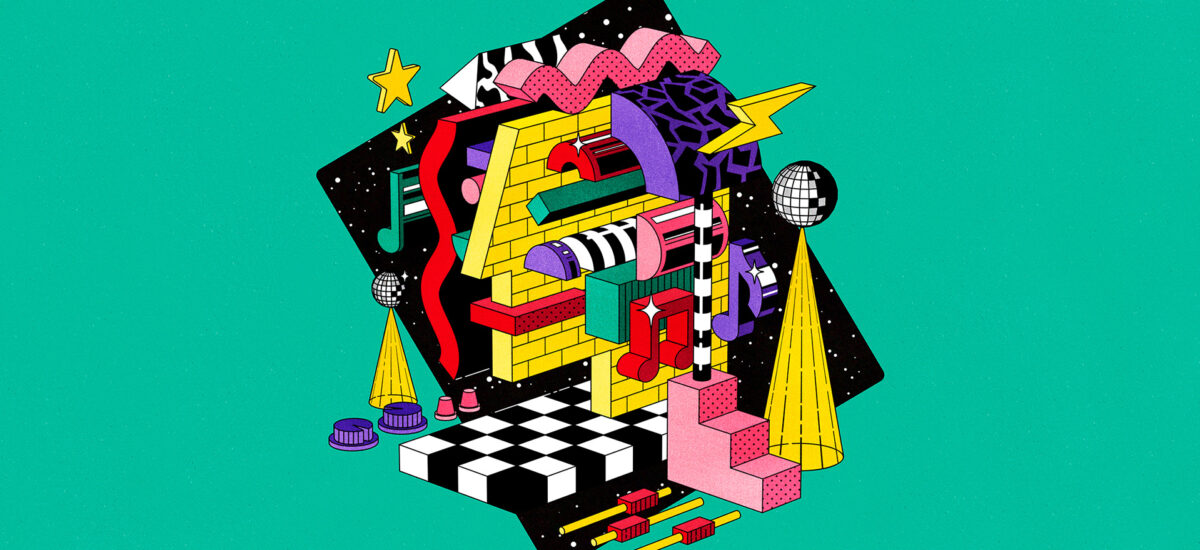
During the 1990s, house music transitioned from a relatively underground genre to the most popular and accessible style of electronic music in the world. The decade witnessed the development of house’s iconic soulful and disco-influenced sound, while also giving rise to many subgenres like progressive house, funky house, handbag house, and garage.
In this tutorial, we’ll explore the process of building your own classic house track from the ground up. This includes designing a funky 4×4 rhythm, layering percussion, arranging a bass line, developing lead melodies, and incorporating vocals that can sound like this.
Jump to these sections:
Follow along with this tutorial using the new FEEL IT Play Series instrument from Native Instruments as well as the new HIGHER PLACE Expansion.
What is 90s house music?
House music developed in Chicago in the 1980s, but by the 90s New York had arguably become the major hotbed of house music production, with labels such as Strictly Rhythm, Nervous Records and Nu Groove Records developing the Chicago sound into a yet tougher and funkier form.
The 90s sound of New York City house was all about pumping four-to-the-floor kick drums, incisive, syncopated open hi-hats, and groovy, swung percussion. Musically the style took inspiration from funk, disco and gospel, combining these soulful sounds with house’s big beats and bass to create an unstoppable dance floor phenomenon.
Across the globe, house music began to evolve into exciting new forms, with Europe being particularly quick to create new developments in the sound, generating multifarious new subgenres ranging from accessible handbag house to deeper progressive house, with plenty in between.
Is house music inspired by disco?
House music is heavily inspired by disco, as well as other forms of music including funk, soul and synth pop. You can hear house’s disco influence in its four-to-the-floor beats, energetic bass lines, and diva vocals. “Disco house” is an especially disco-centric subgenre of house music, with DJ Sneak being one of its foremost practitioners.
What era was house music?
House music started life in the post-disco era of the early to mid-1980s, with the Warehouse club in Chicago giving the genre its name. The genre exploded in popularity in the 90s, and remains popular to this day, with new subgenres appearing all the time.
House pioneers of the 80s and 90s include Frankie Knuckles, Steve “Silk” Hurley, Farley “Jackmaster” Funk, Marshall Jefferson, Todd Terry, Masters at Work, Armand Van Helden and Tony Humphries.
10 essential 90s house anthems
1. Hardrive – “Deep Inside”
One of the most influential house tracks ever made, “Deep Inside” refines house down to its funky essence with incessant beats, big bass and an anthemic vocal.
2. Nightcrawlers – “Push The Feeling On (The Dub of Doom)”
House legend MK turns the jazzy original ”Push The Feeling On” into a hook-filled dance classic that’s simultaneously gloomy and euphoric.
3. Todd Terry – “Jumpin’ (Original)”
An early disco house classic featuring a cut up Musique sample, “Jumpin’” takes disco into previously unexplored deep and dark territory.
4. River Ocean feat. India “Love & Happiness (Yemeya Y Ochun)”
The ubiquitous Masters as Work create an all-time classic vocal track with this ethereal slice of pure Latin excellence.
5. Kristine W – “Feel What You Want (Our Tribe Vocal)”
“Feel What You Want” showcases house music’s ability to transcend party music with its heartbreaking vocals and murky, unceasing organ melody.
6. The Bucketheads – “The Bomb (These Sound Fall Into My Mind)”
With its nearly fifteen-minute runtime, this track transforms Chicago’s “Street Player” into an extended house workout that’s a masterclass in arrangement.
7. Joe T. Vannelli Project – “Sweetest Day Of May (Greed Vocal)”
An impeccable slice of gospel-inspired Italo house remixed into the ultimate handbag house floor-filler by UK production duo Greed.
8. De’Lacy – “Hideaway (Deep Dish Remix)”
“Hideaway” was a massive worldwide hit thanks to its catchy vocal juxtaposed with a bleak, highly-rhythmic backing track choc full of weighty bass and hooky synths.
9. St Germain – “Alabama Blues (Todd Edwards Vocal Mix)”
Garage hero Todd Edwards showcases his unparalleled sampling skills with this uplifting sonic collage that’s a far cry from the dubby original version.
10. Daft Punk – “Around The World”
French house innovators Daft Punk give the talkbox a thorough workout on this funky, synth-centric production.
How to make a 90s house track
In this walkthrough we’re going to use Native Instruments KONTAKT 7, BATTERY 4, KOMPLETE KONTROL, plus FEEL IT and TIMELESS GLOW expansions along with iZotope Neutron 4 and Ozone 10 to create a 90s house track from scratch.
If you haven’t seen it yet, FEEL IT KOMPLETE Play Series instrument and the new HIGHER PLACE Expansion dive into the late-night sound and continuing global influence of classic house music.
1. Make a drum beat
The first thing we need to do is increase our project tempo a touch, set it to 125 BPM.

Now add KOMPLETE KONTROL to a new MIDI track and in the file browser navigate your way to where the TIMELESS GLOW expansion is located.
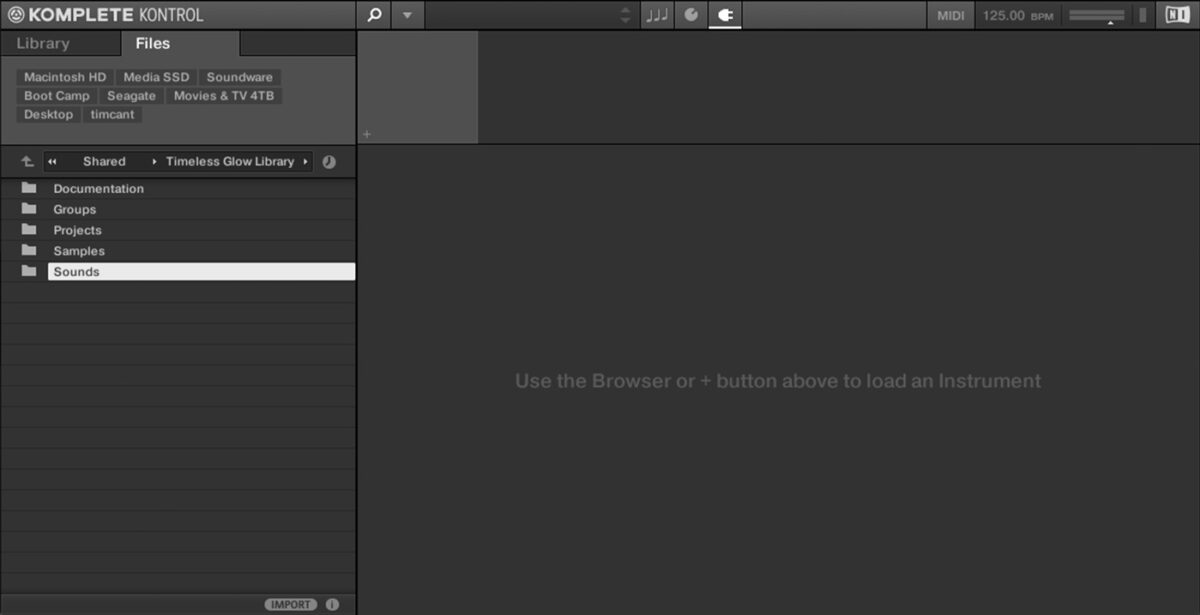
If you’re not sure where to find TIMELESS GLOW, open Native Access, select Timeless Glow from the list of installed products, and click the Installation Path tab on the right. This will display the location of the expansion.
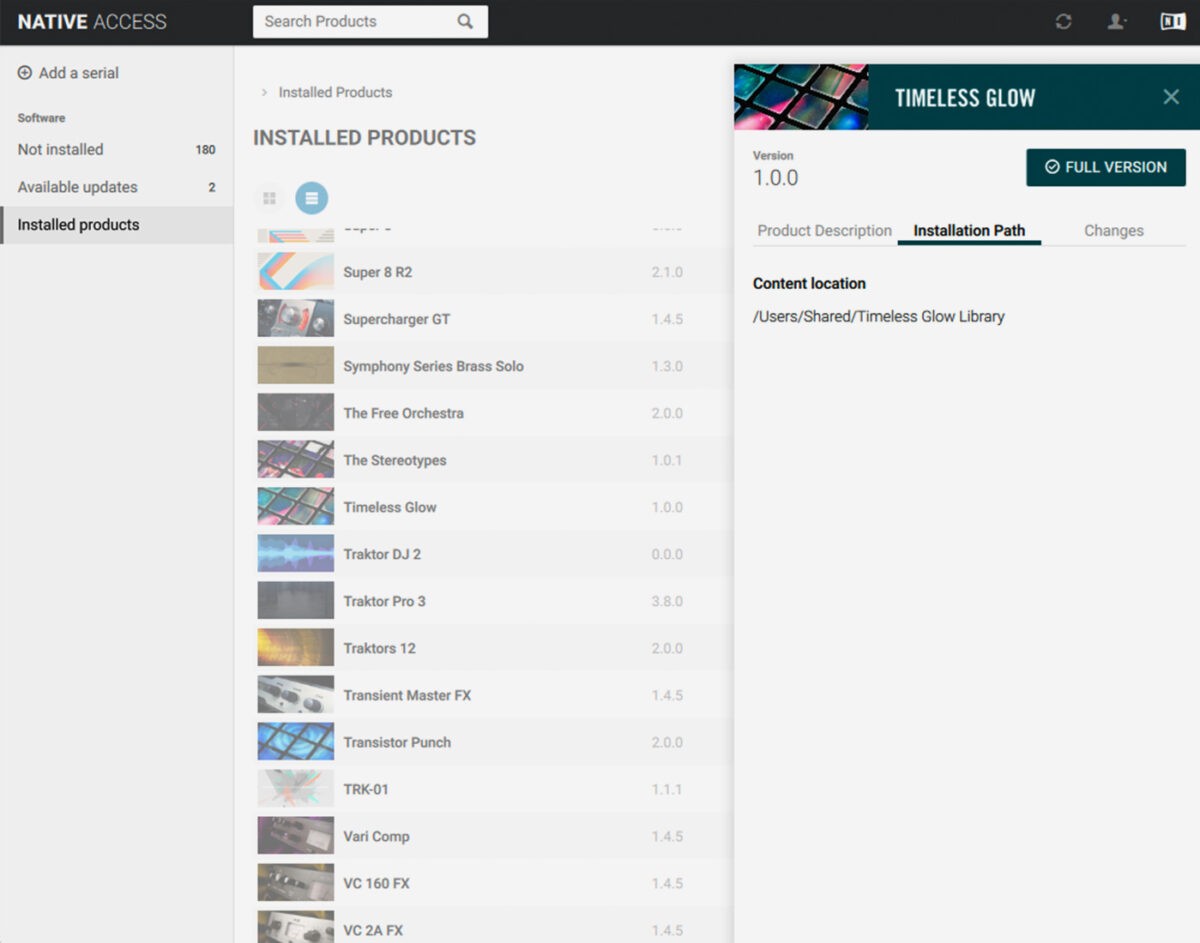
Open the Sounds > Battery Kits folder, and double-click the Cook Kit to load it up.
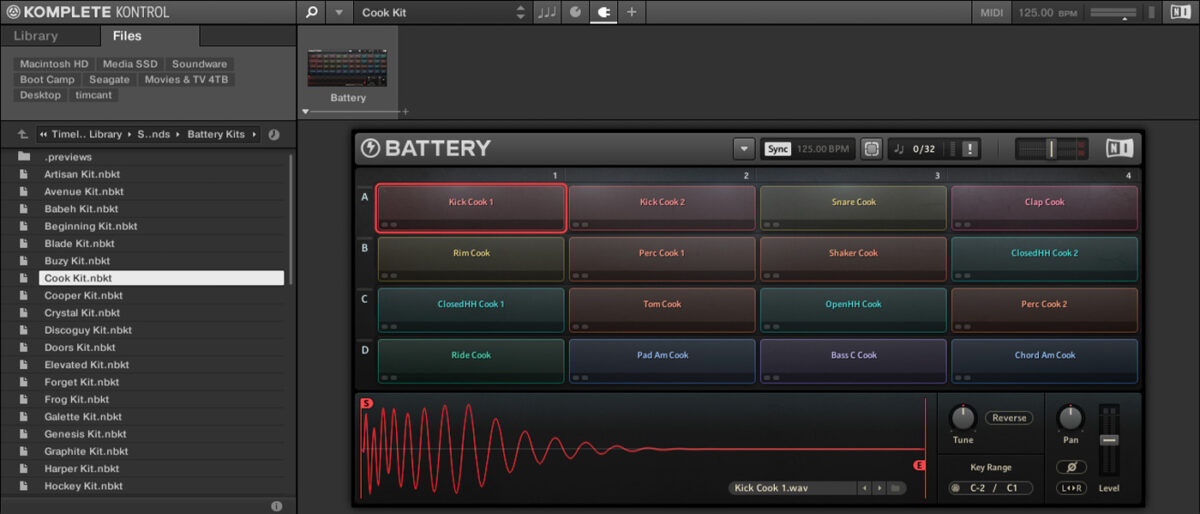
We’ll start by making a single bar drum pattern. Add C1 kicks on every beat of the bar. We’re going to use velocity values of 100 for everything in this walkthrough, unless otherwise specified.
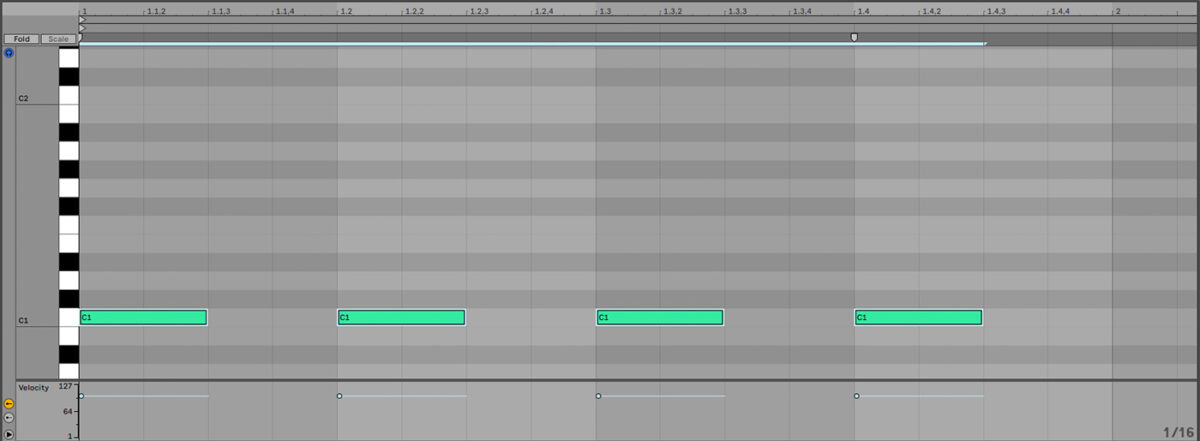
Now add D#1 claps on the second and fourth beat.
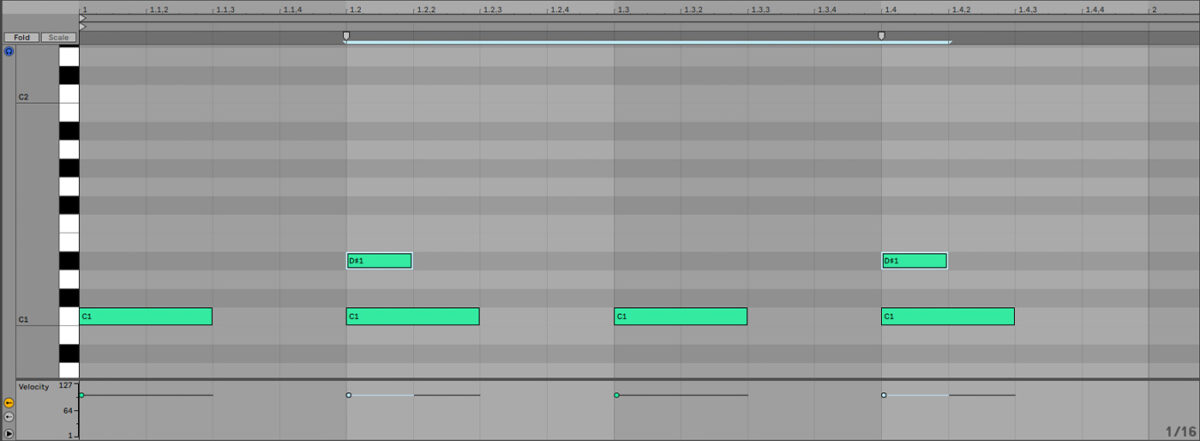
Place A#1 open hats between each beat.
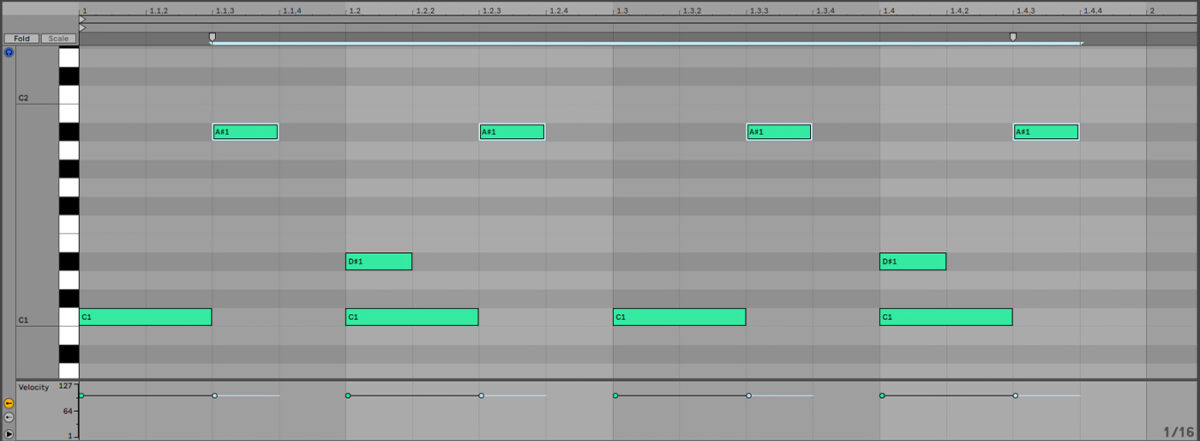
Now add G#1 closed hats with a velocity of 64 on each beat.
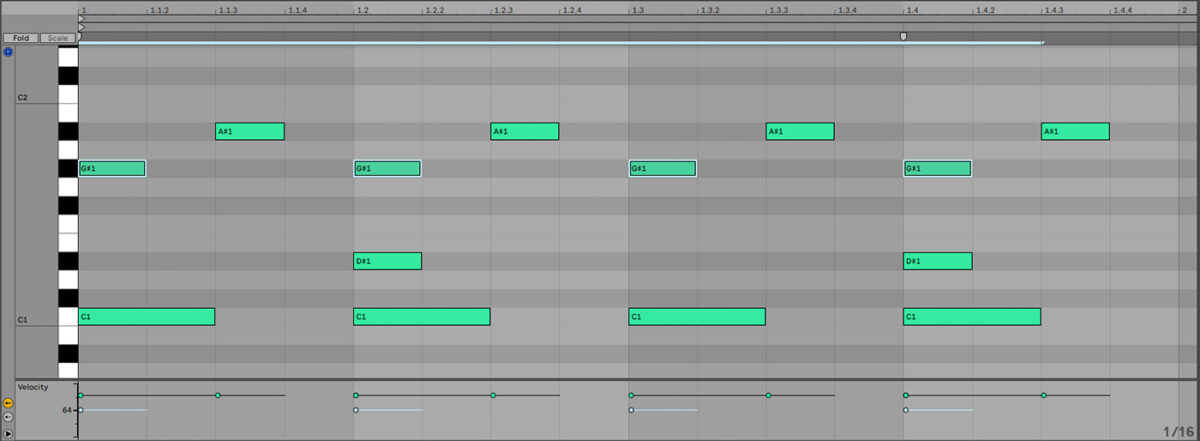
We now have a basic single-bar house beat, but it’s lacking that characteristic 90s house swing. Before we add that, let’s duplicate the beat out so that it plays for two bars.
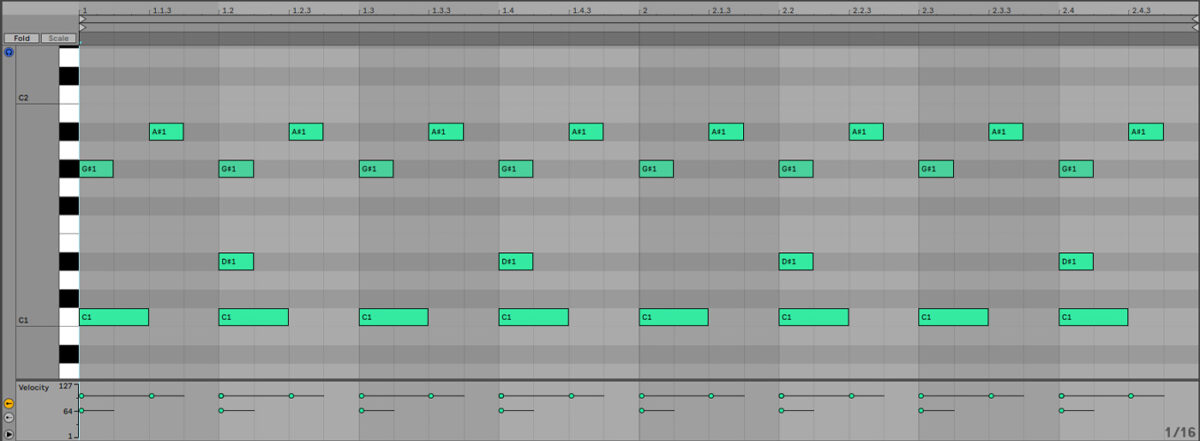
Now add another closed hat, this time with a velocity of 82, just after the final sixteenth note of the third beat of the first bar.
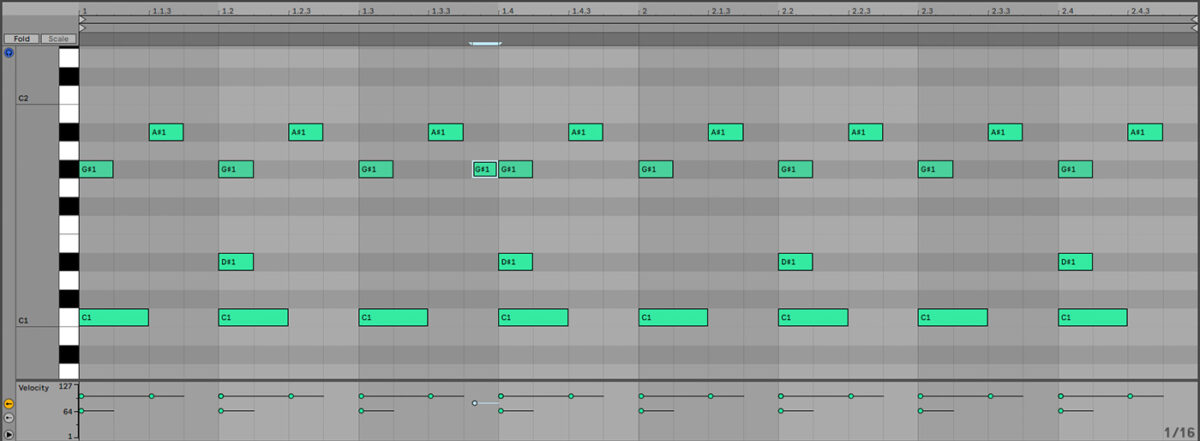
Now add another closed hat with the same velocity, just after the final sixteenth note of the second bar.
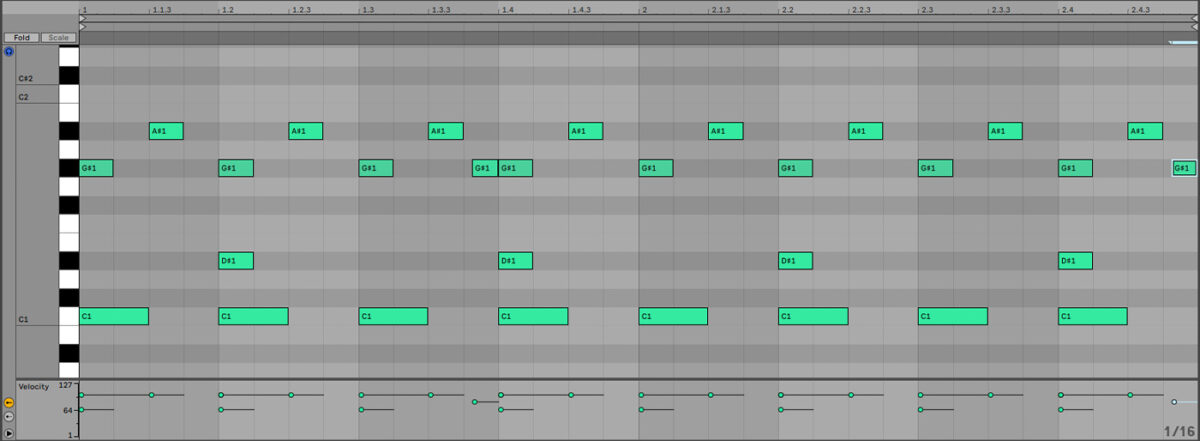
Now we have a funked-up two-bar groove. Let’s apply some subtle processing to get a more 90s house sound. First, use an EQ to add 2 dB at 1.5 kHz.
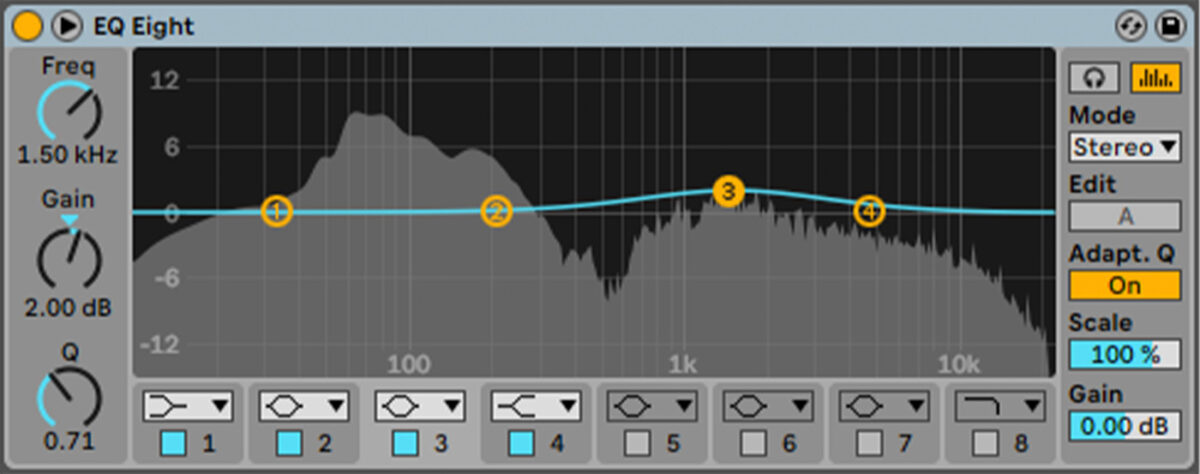
Now compress the track to help it sound more pumping. Here we’ve used medium Attack and Release times, turned down the Threshold, and turned up the Makeup gain.
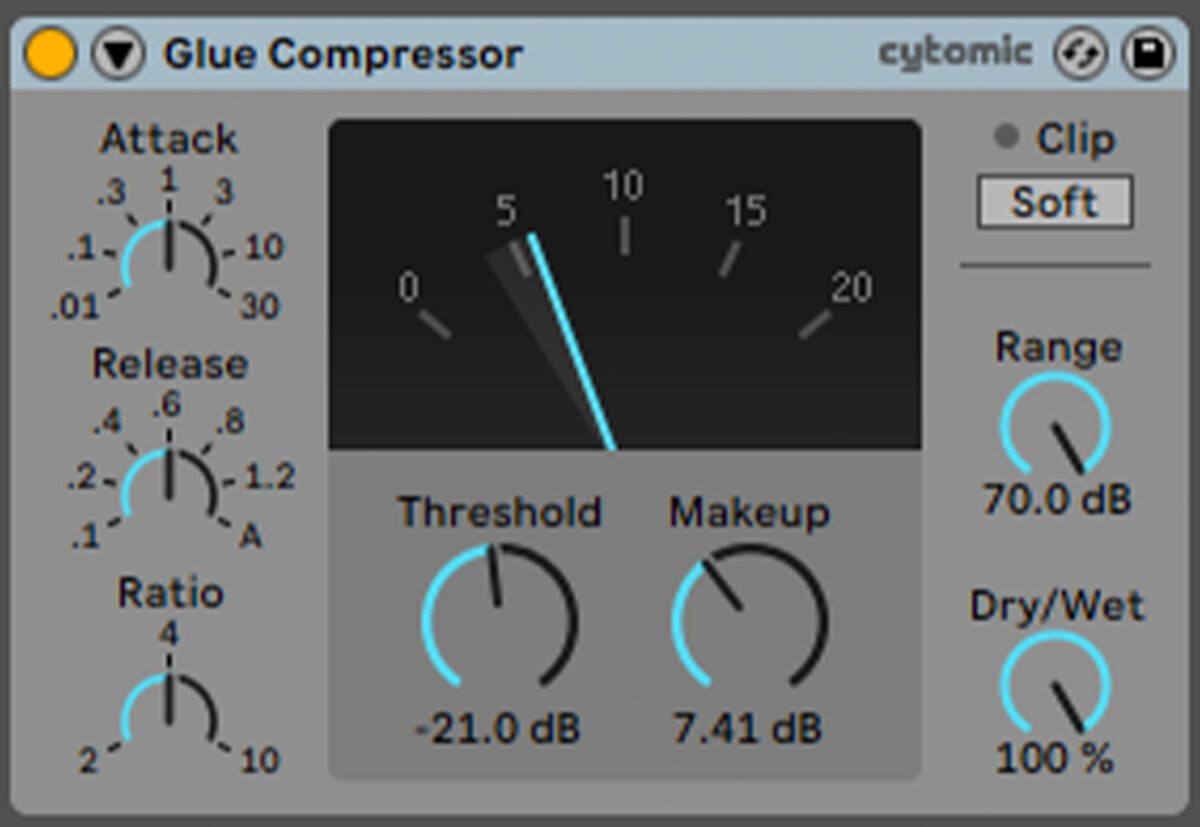
Now let’s add some percussion to spice things up. In KOMPLETE KONTROL, return to TIMELESS GLOW’s root, and this time open Samples > Loops > Percussion. Drag Shakers[125] Avenue onto an audio track in your DAW.

Set this track to -25 dB to balance it with the existing drum track.
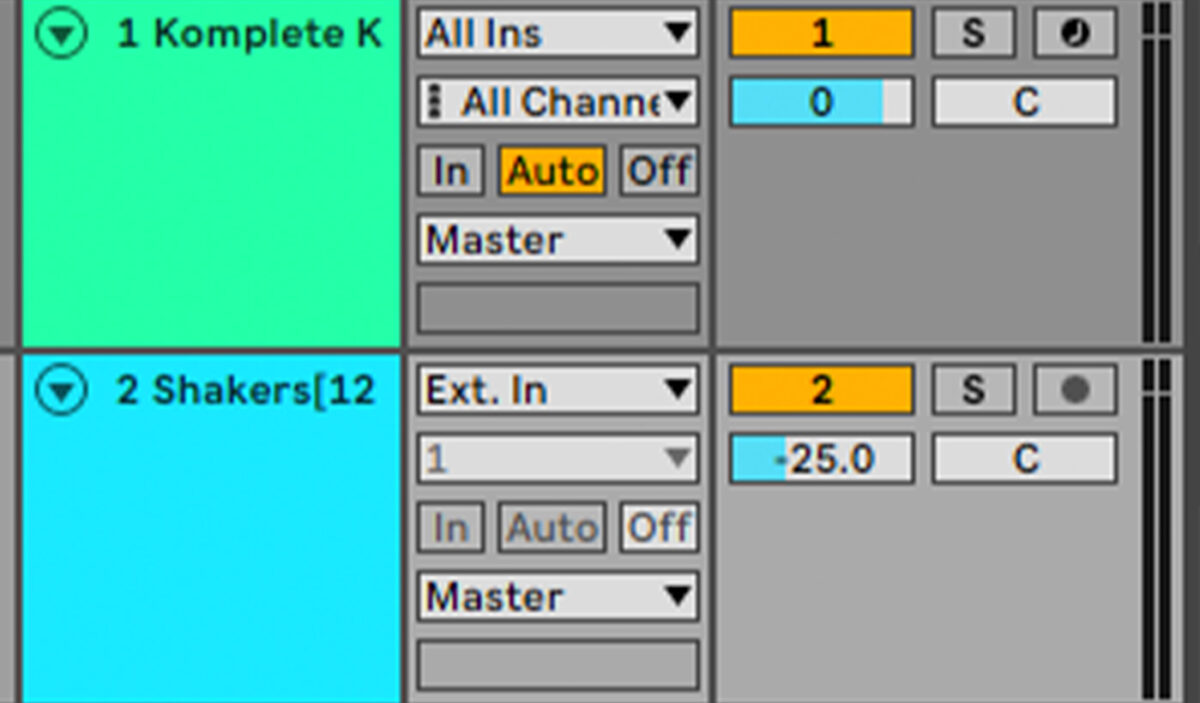
Truncate the loop so that it plays for two bars.

Return to KOMPLETE KONTROL and now drag Percussions[126] Buzy onto another audio track.

Use your audio editing software’s timestretching or “warp” ability to timestretch it from its original 126 BPM to the project’s 125 BPM.

Set this track to -11 dB.
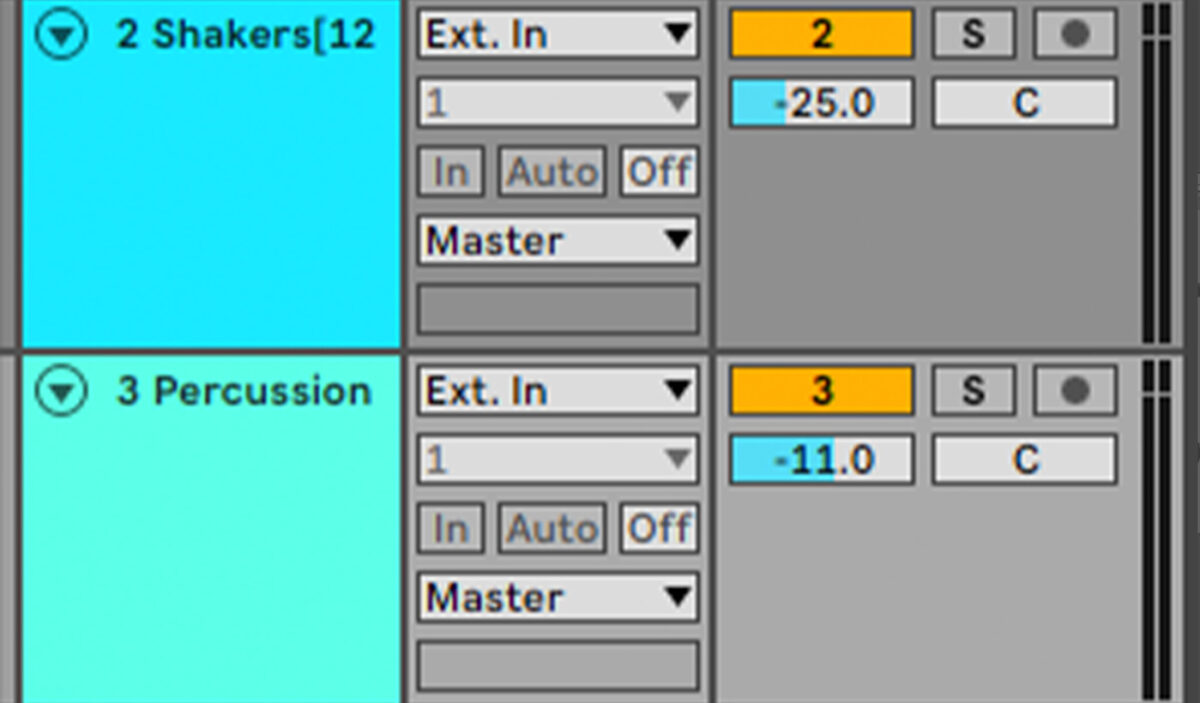
Let’s tighten up this loop’s room sound to help it sound less messy in the mix. Add an instance of iZotope Neutron 4 Transient Shaper to the audio track. Set the low-band crossover to 200 Hz, and the high-band crossover to 6 kHz.
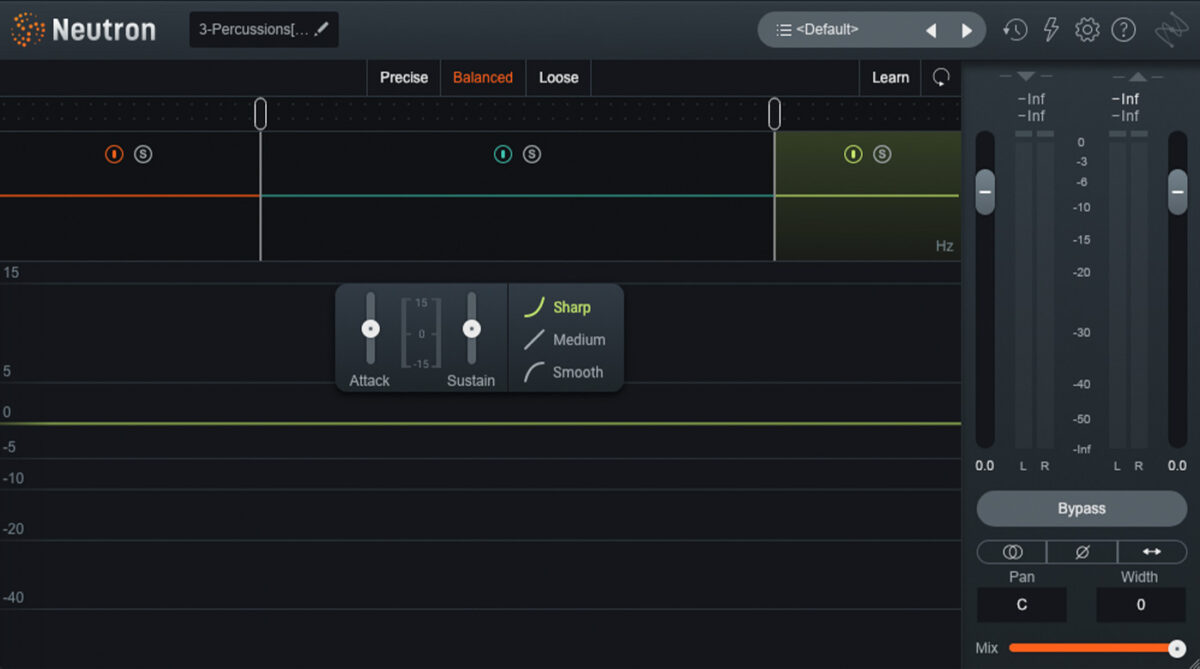
Now turn down the mid-band’s Sustain to -10. This will make the percussion loop sound less “roomy,” which helps the Cook Kit drums to punch through the mix.
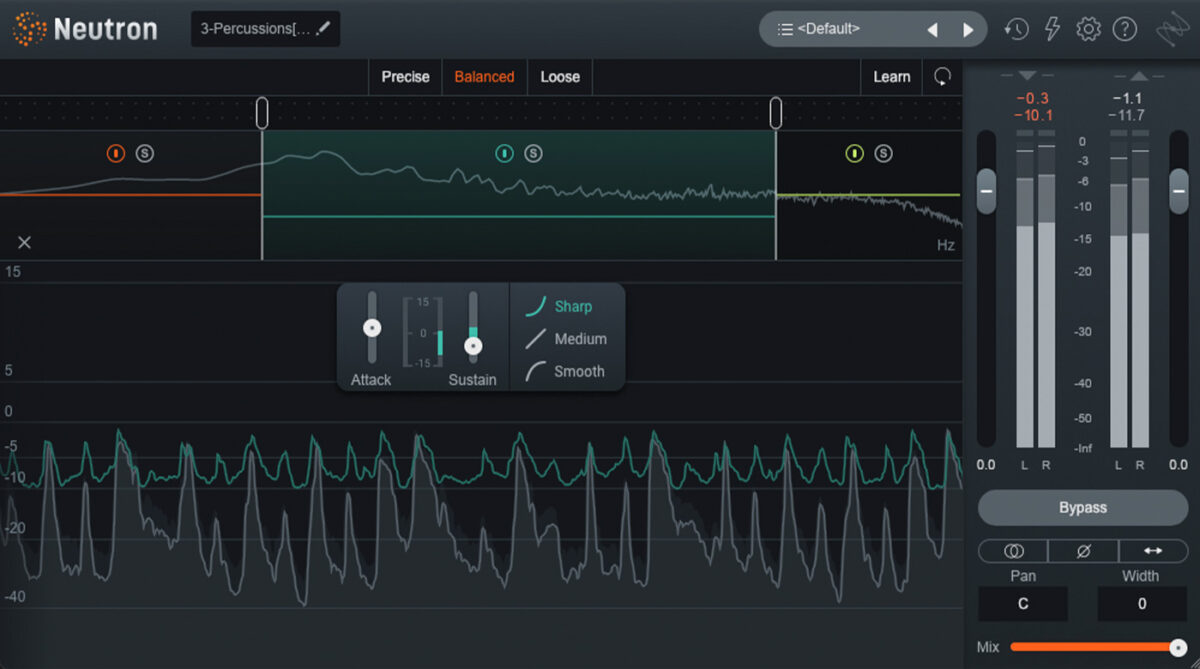
Our drum beat is complete, so let’s move on to the track’s musical elements.
2. Compose a lead line
Add KONTAKT 7 to a new MIDI track. Load up the FEEL IT instrument from the browser.
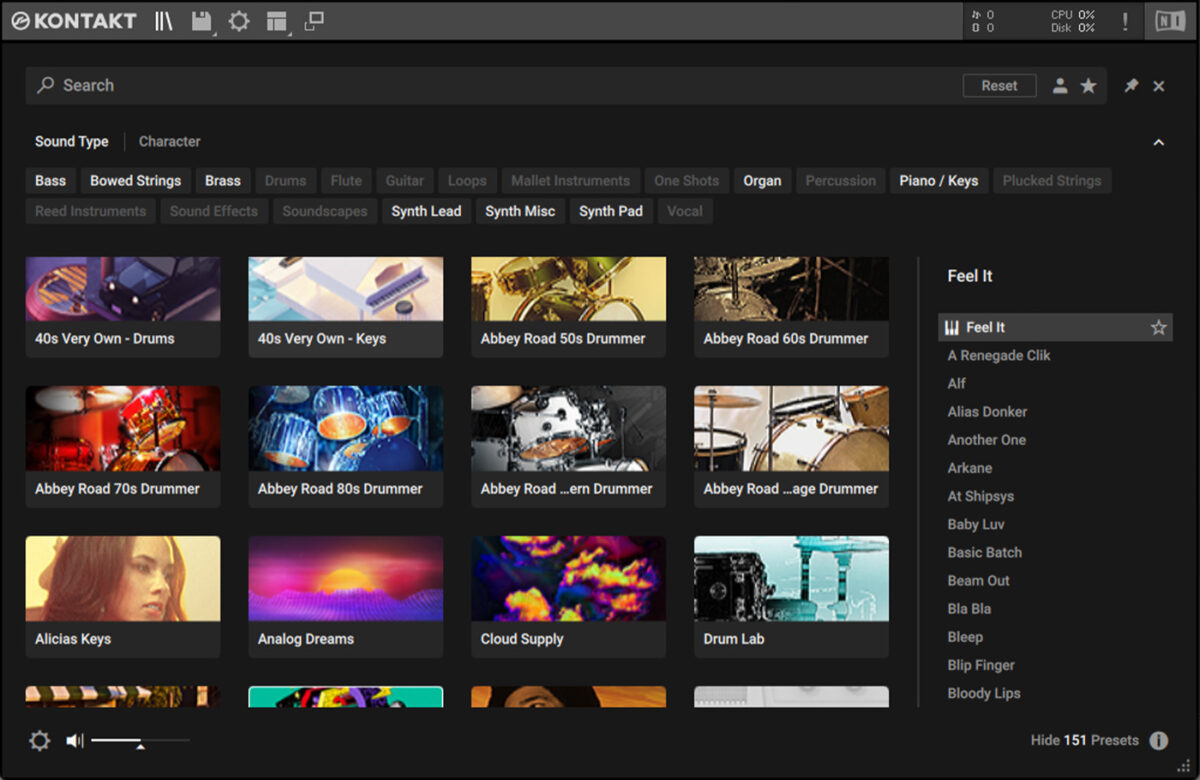
Click the down arrow next to the patch name to bring up a list of available patches. Select Organ > Sunday Sermon.
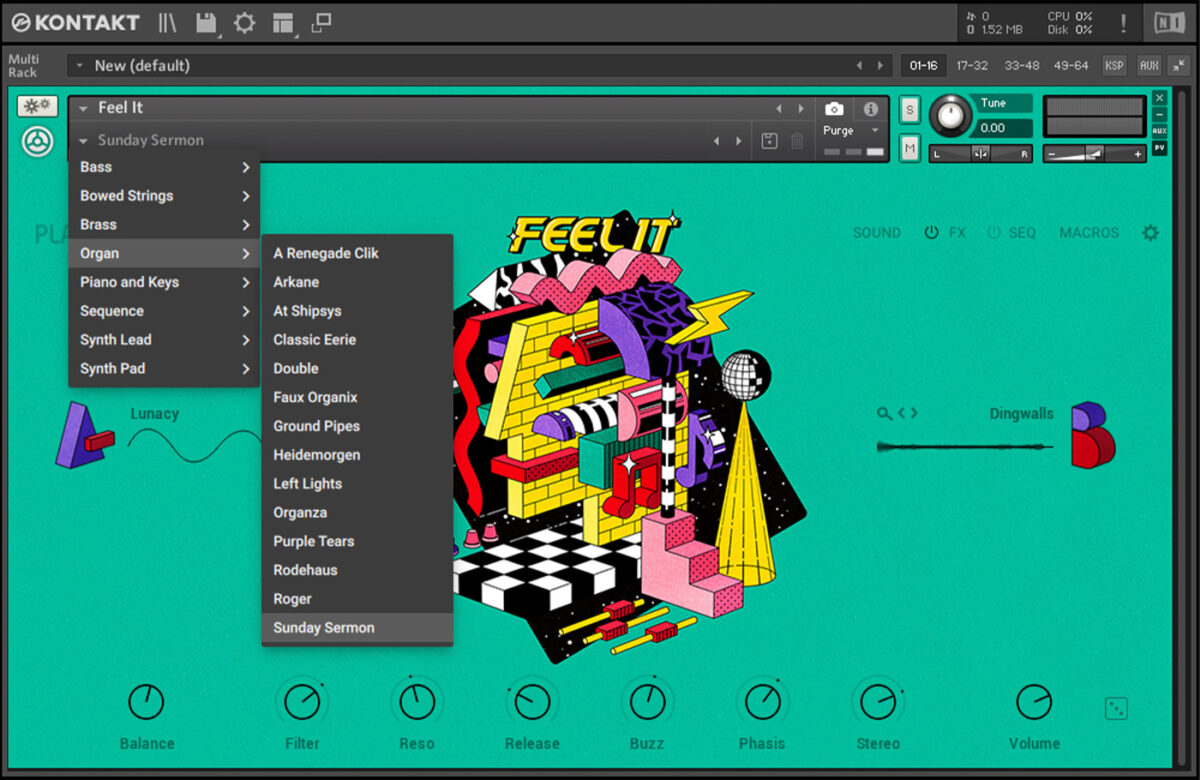
Set this track to -4 dB.
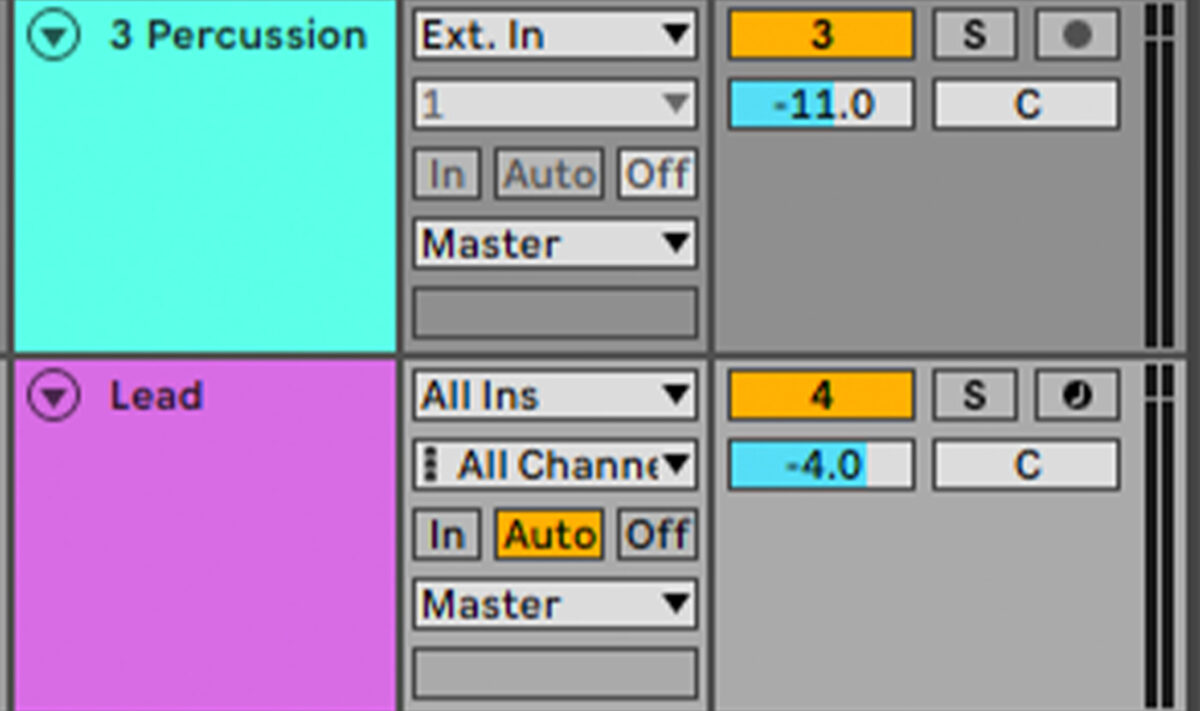
Copy the simple, two-bar lead line we’ve used here.
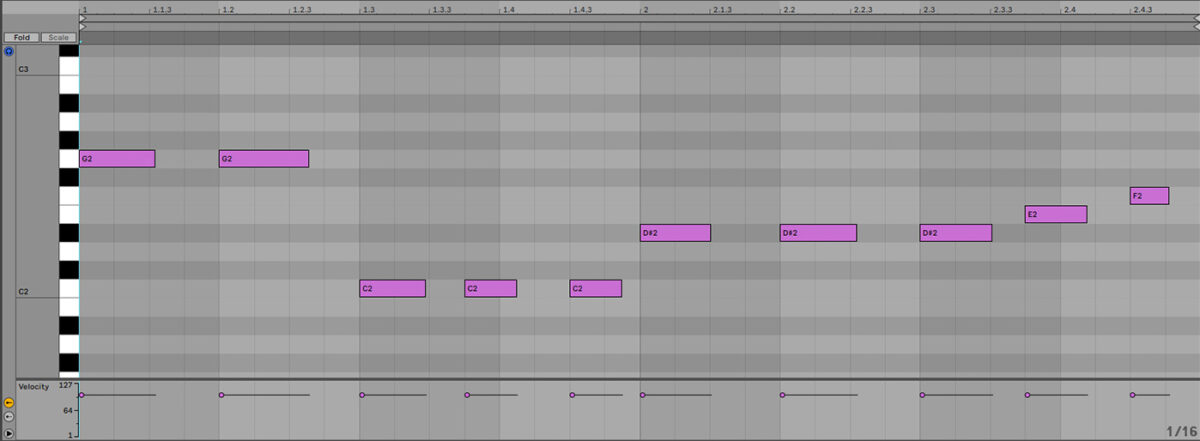
This is a simple lead, but it provides us with a musical foundation for the rest of the track. Let’s add a bass line next.
3. Write a bass line
We’re going to make a four-bar bass line, so duplicate out the existing two-bar arrangement.
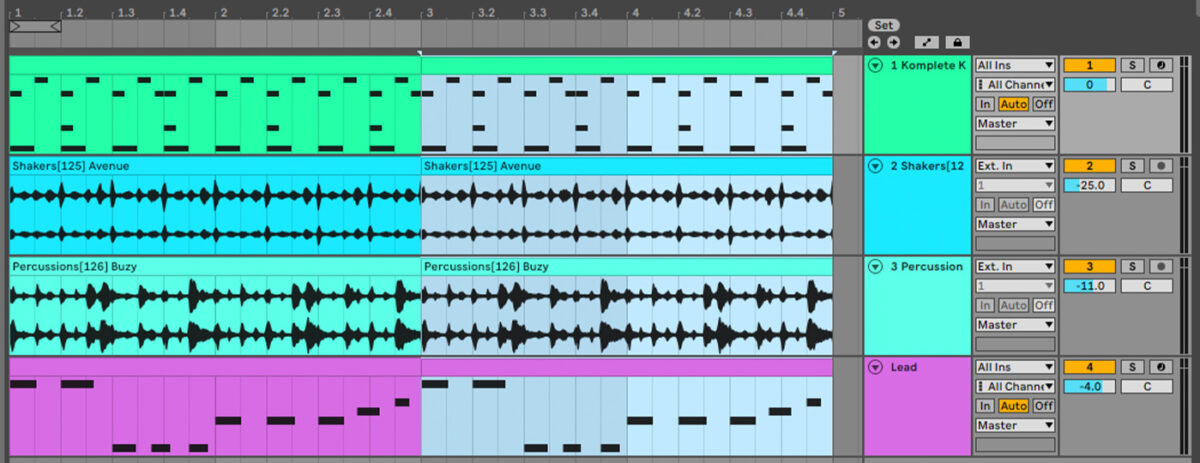
Add a new MIDI track and add an instance of KONTAKT 7. Again load up the FEEL IT instrument, and this time select the Bass > Praise the Bass preset.
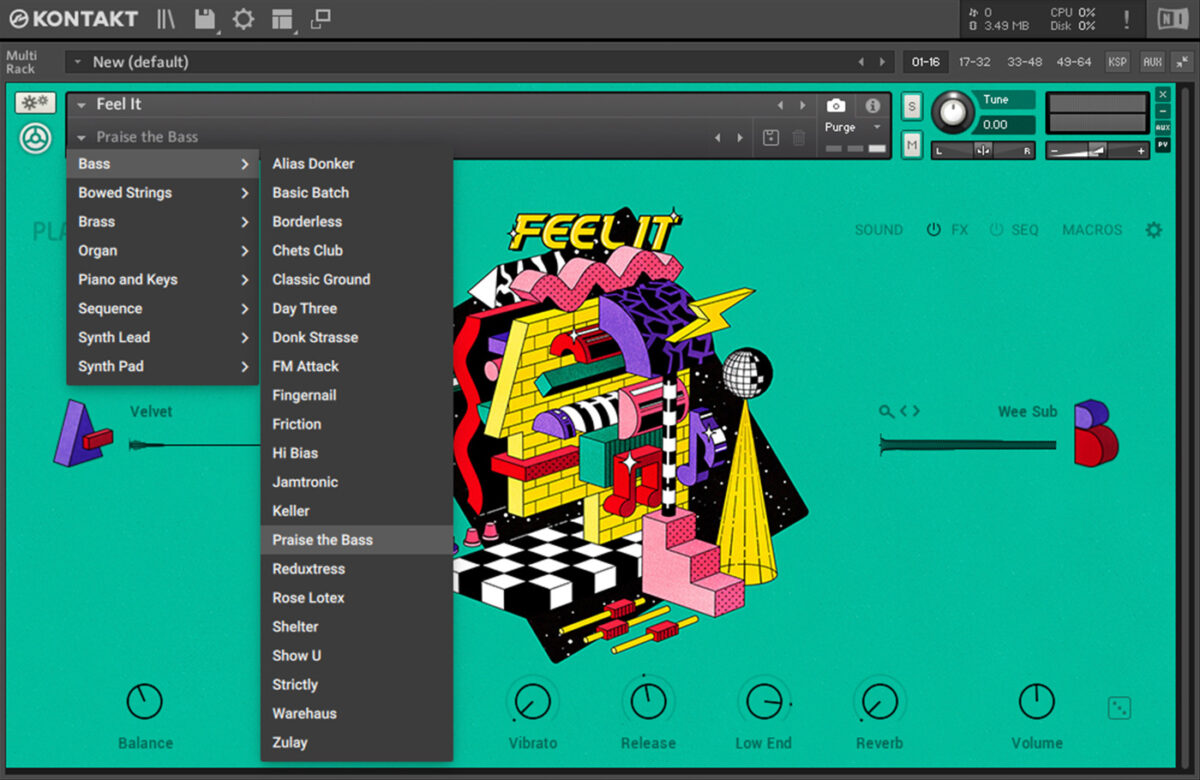
Set this track to -2.5 dB.
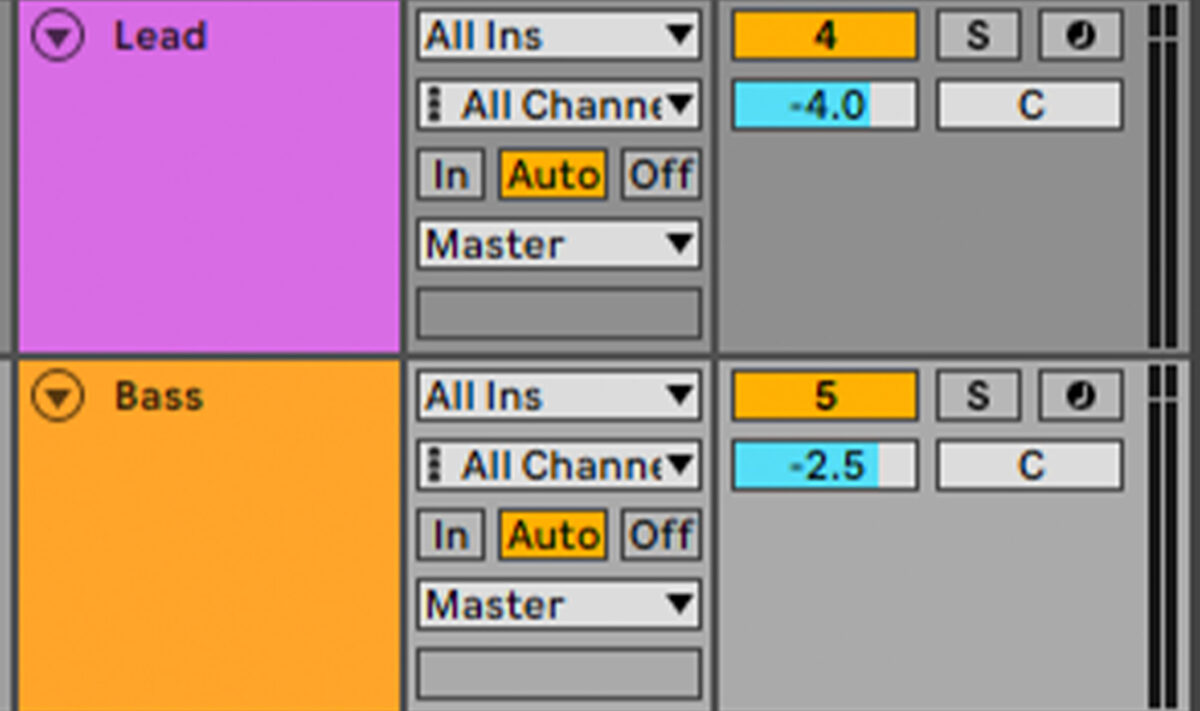
Copy the bass line we’ve used here. Both two-bar phrases are identical aside from the higher note on bar 4 beat 2.

4. Add more synths
Let’s flesh things out with some more synth sounds. First add another MIDI track with a KONTAKT 7 instrument on it, and this time load up Organ > Left Lights in the FEEL IT instrument.

Set this track to -1 dB.

Copy this simple part to make a rhythm line that helps push the track along. Note the raised note at the end of the fourth bar.

Now let’s add a counter-melody. Add another KONTAKT 7, and this time load the FEEL IT instrument’s Synth Lead > Blip Finger preset.
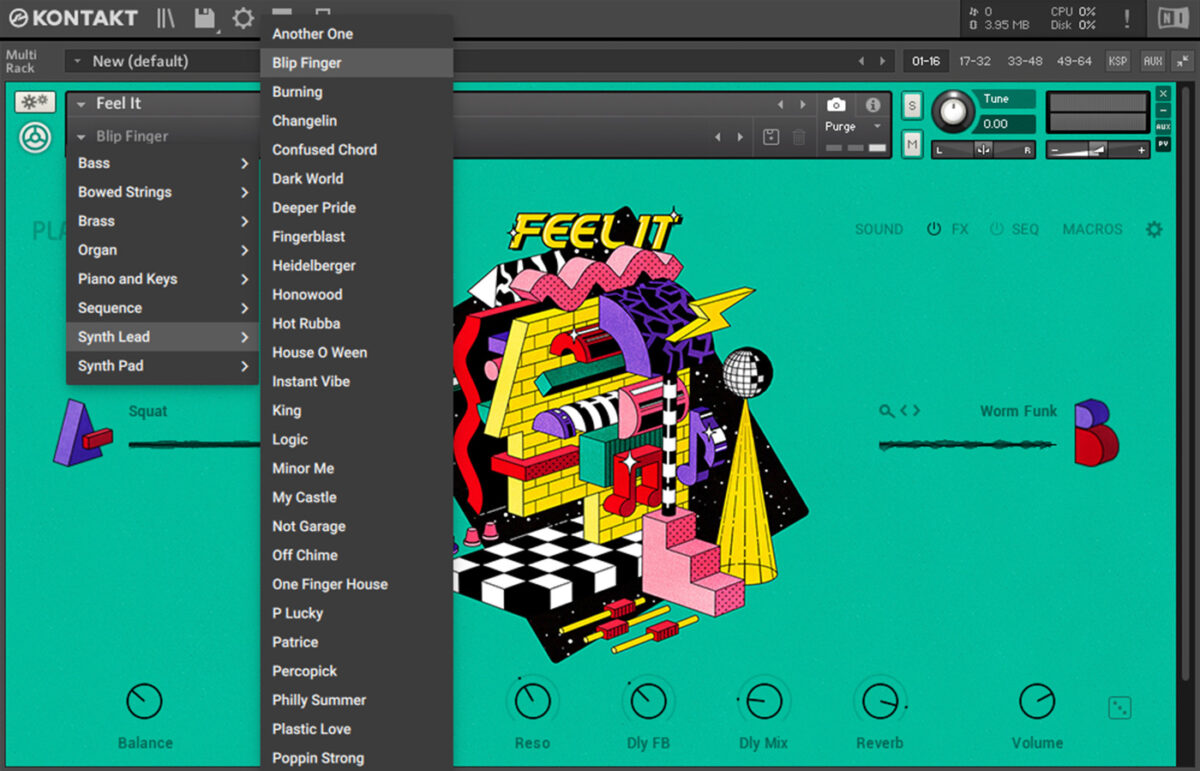
Set this track to -1 dB.
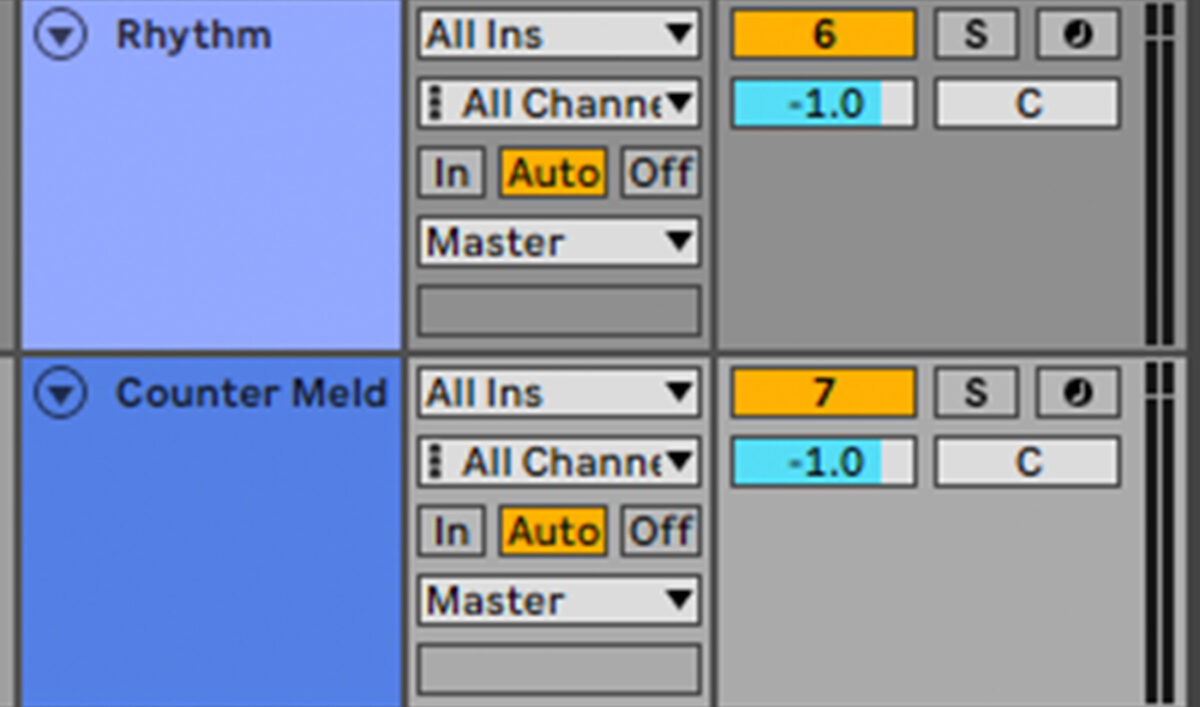
Copy the counter-melody pattern we’ve used here.

5. Add a vocal sample and sound FX
Let’s add a vocal from the TIMELESS GLOW expansion. In KOMPLETE KONTROL navigate your way to the Samples > One Shots > Vocal folder, and drag Vocal Frog.wav onto a new audio track.
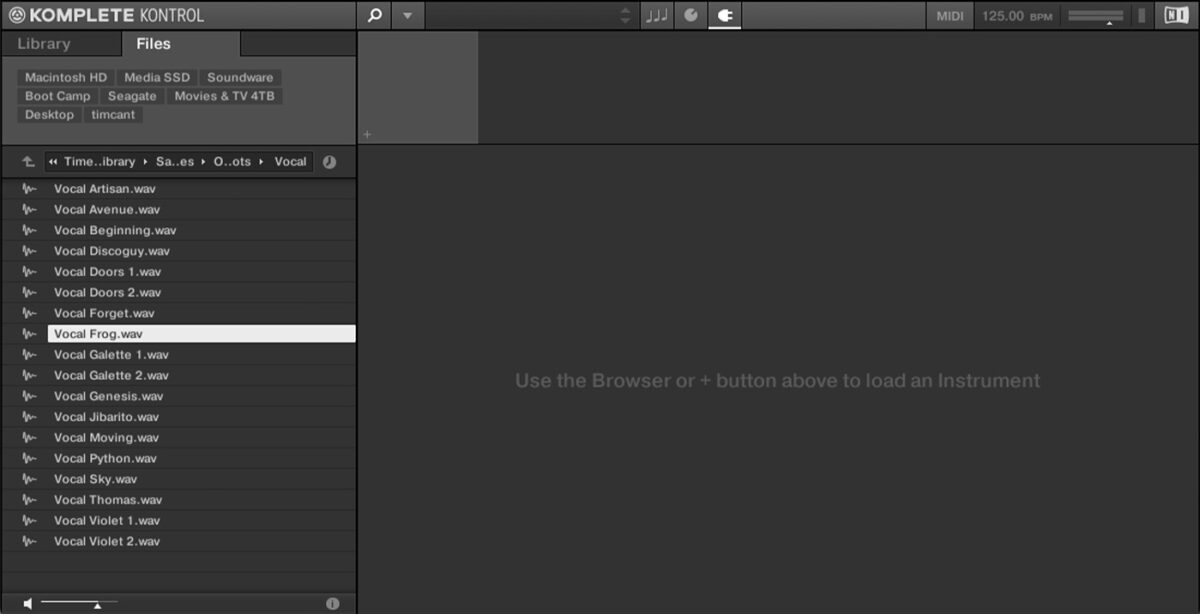
Position the vocal on the penultimate beat of the sequence.
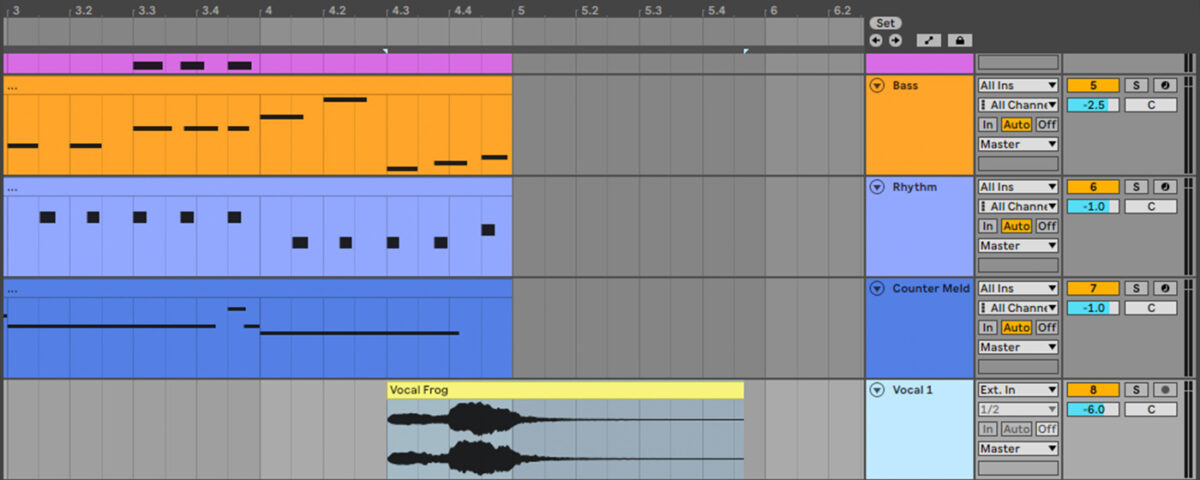
Turn the vocal’s track down to -6 dB.
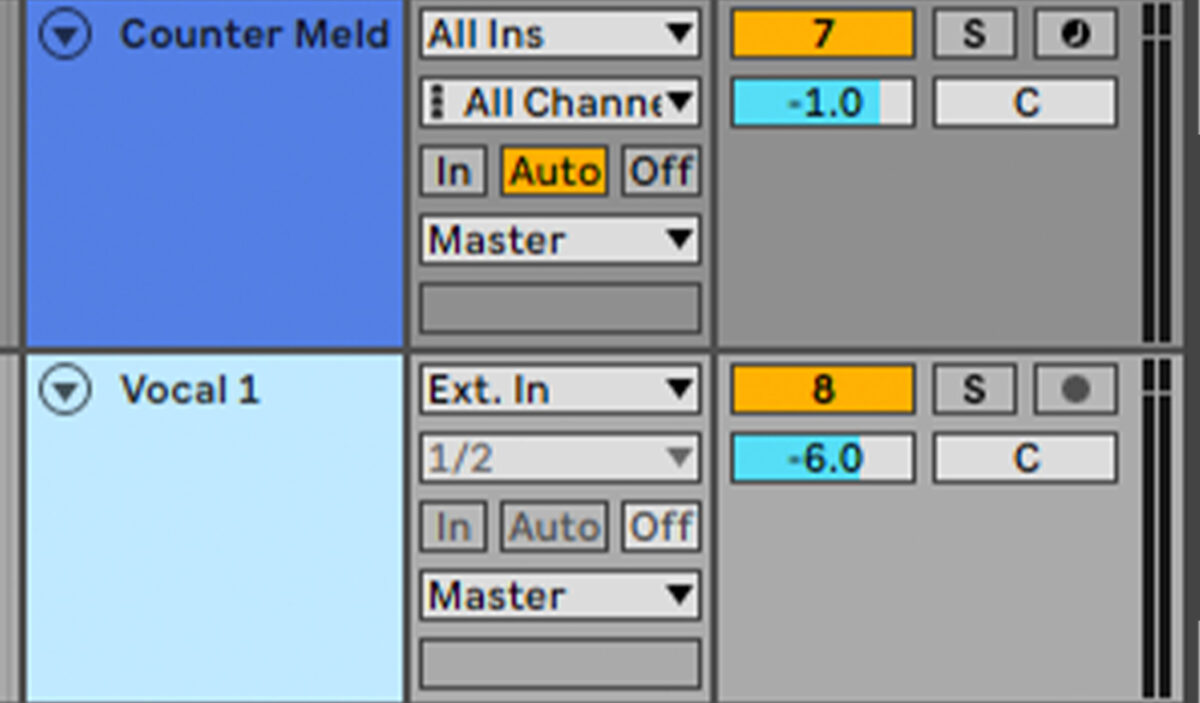
The vocal sounds a little dry, so let’s add some delay to the word “right.” Move that part of the sample down onto its own audio track, turning the track down to -6 dB so that it’s the same volume at the original track.
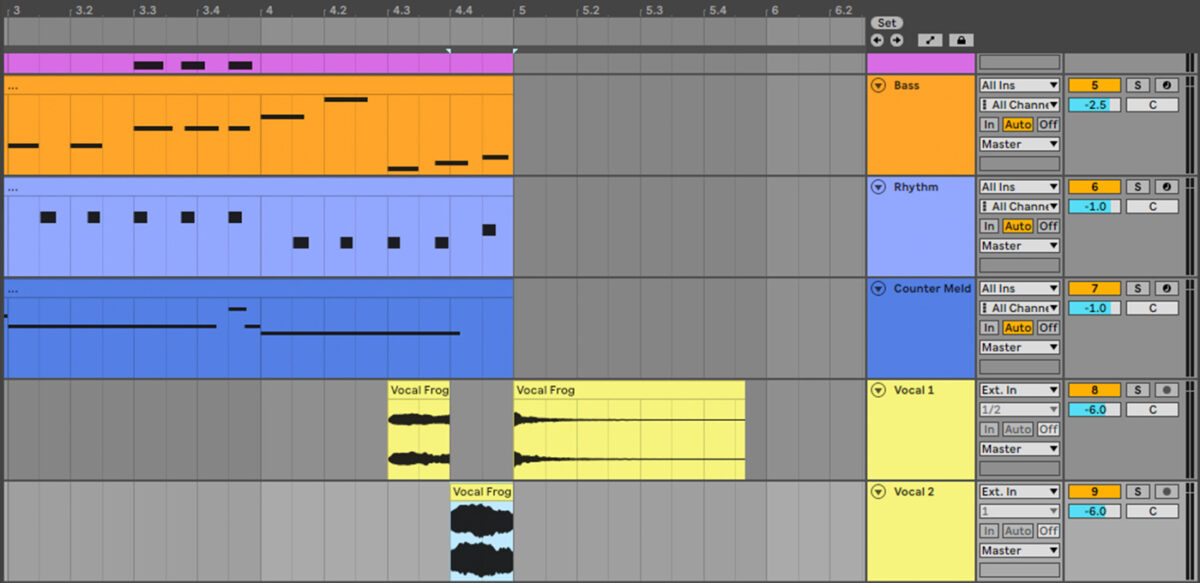
Add a quarter note delay to the new track.
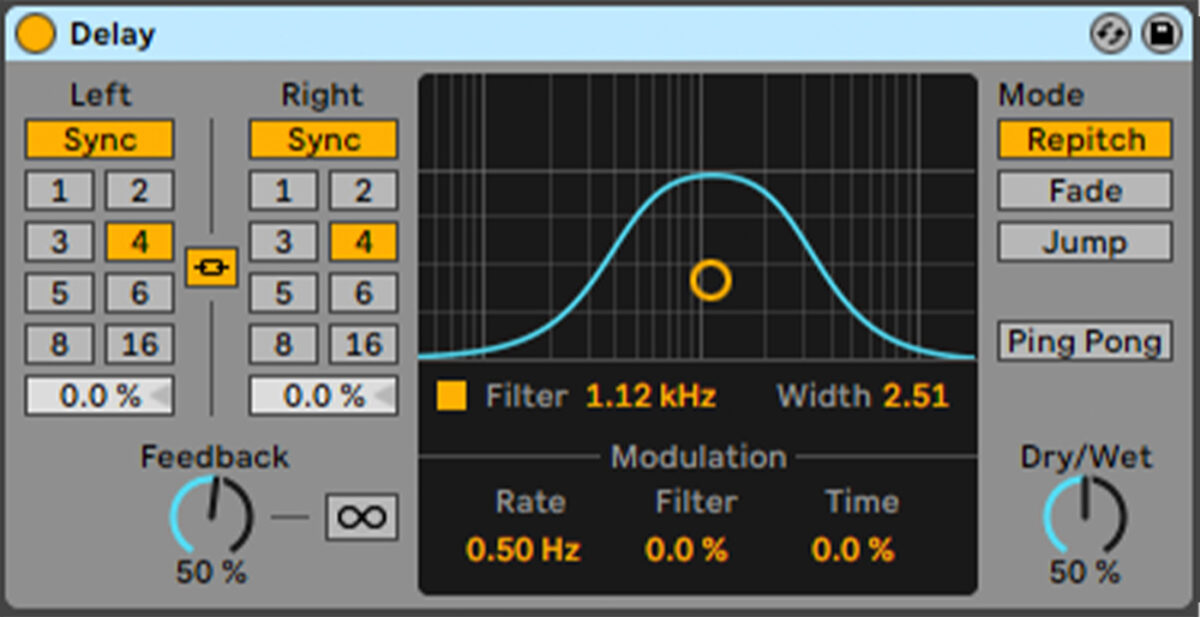
Now let’s add a sound effect. In KOMPLETE KONTROL navigate your way to TIMELESS GLOW’s Samples > One Shots > Analog FX folder, and drag FX Jibarito.wav onto a new audio track.
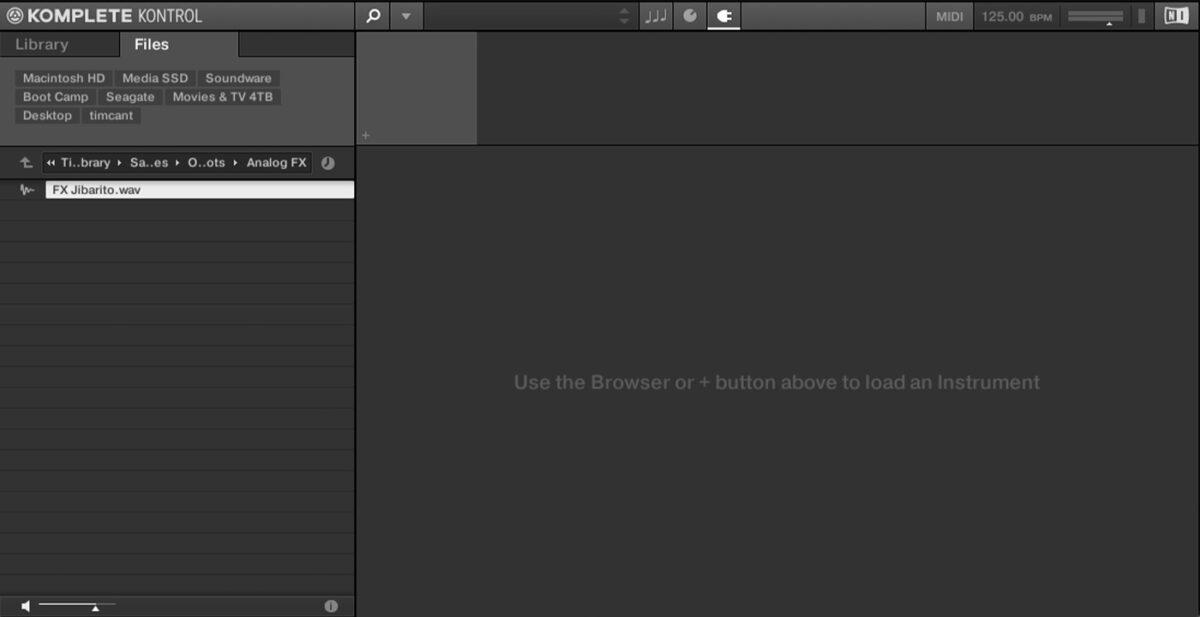
Position the sample on the final beat of the sequence.
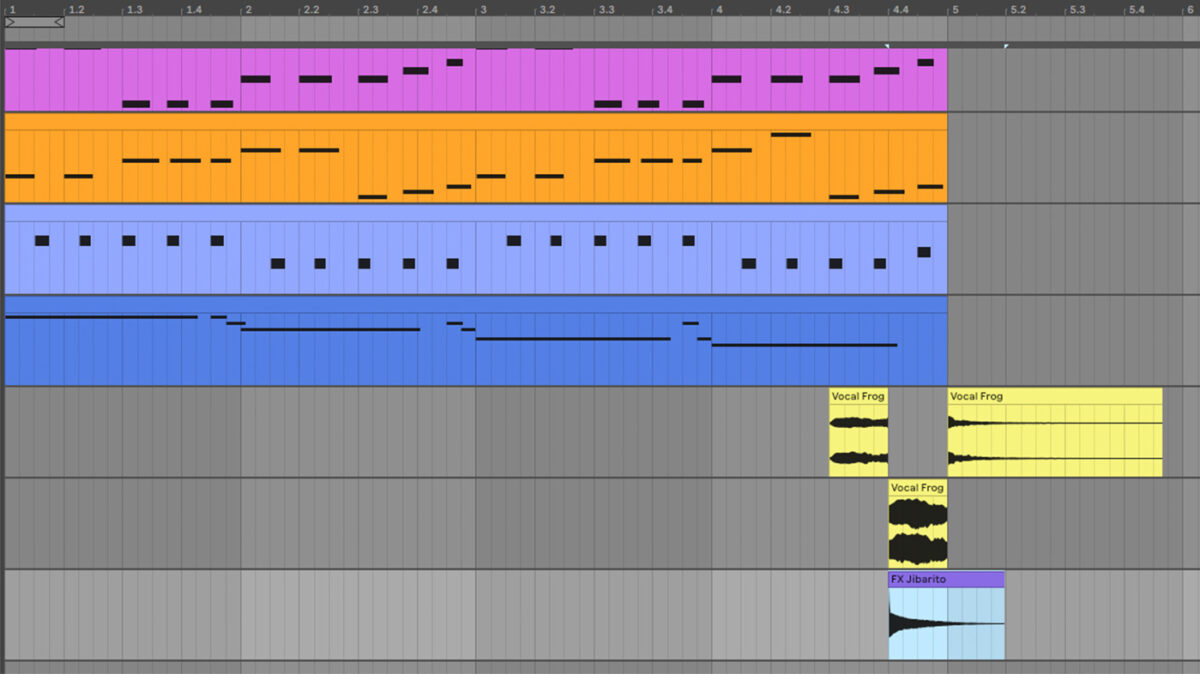
Turn the track down to -11 dB.
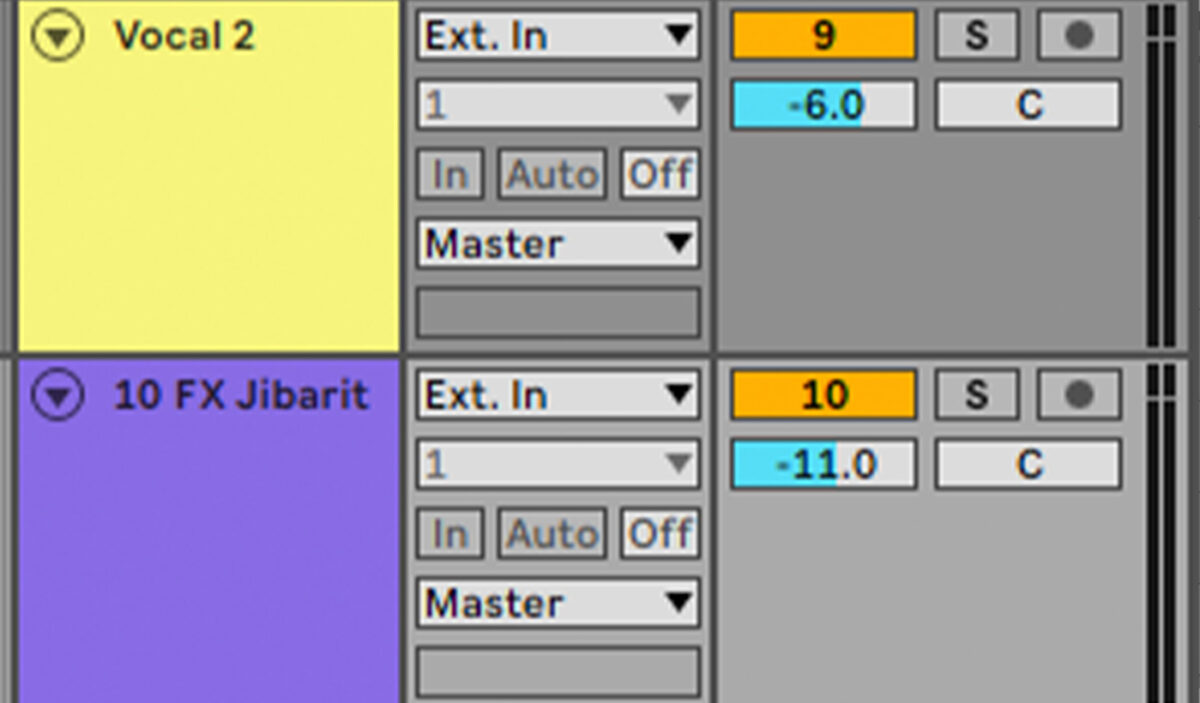
Now add a quarter note delay effect to the track.
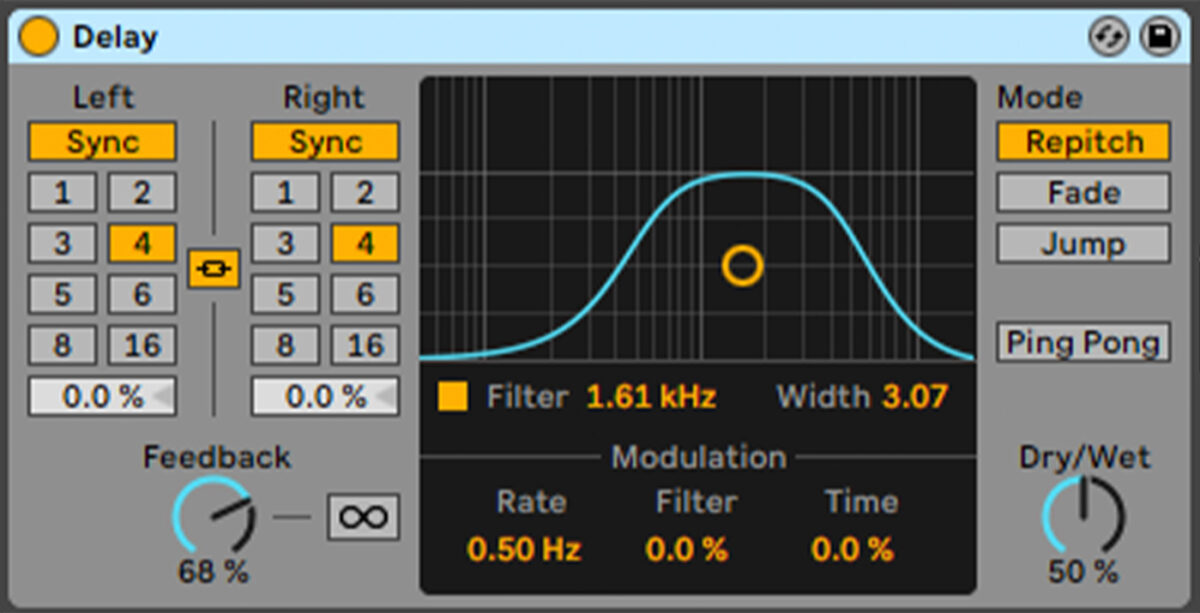
Now we have all the elements of our track, let’s make an arrangement.
6. Arrange your house track
Here’s our arrangement. It’s very straightforward, everything is simply copied and pasted from the initial loop, though note the drum sections between bar 45-49 and 89-97 are stripped down to just the kick.

7. Master your house track
Let’s get our track sounding good and loud with some simple mastering. iZotope Ozone 10 Master Assistant is an easy way to get a great-sounding master, combining assistive technology and your own preferences to dial-in your sound.
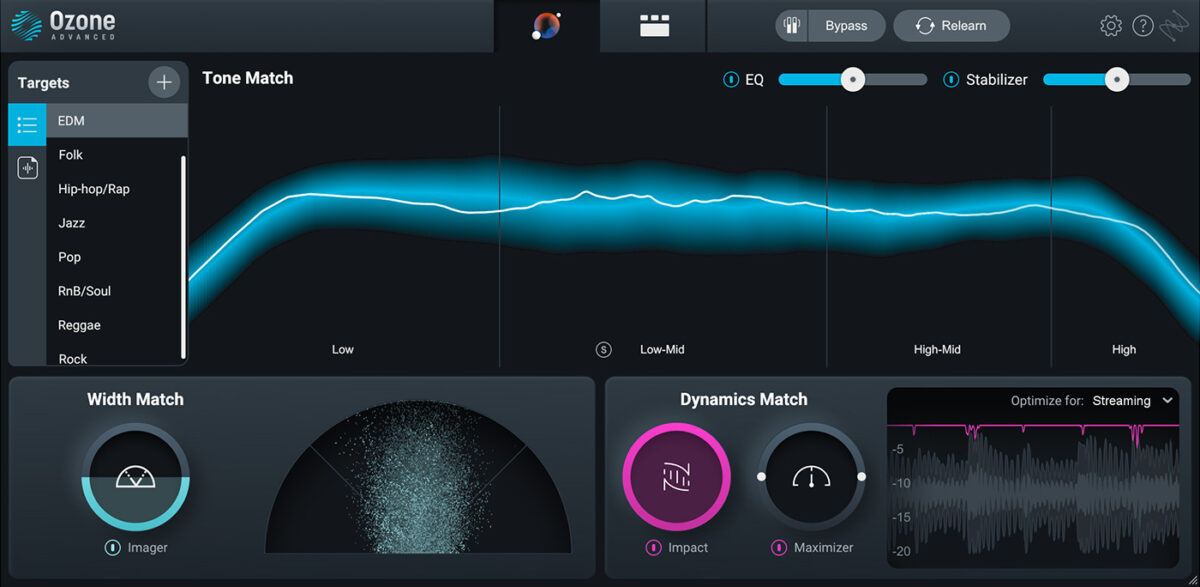
Here’s what our final house track sounds like mastered with Ozone 10.
There you have it, an authentic soulful 90s house groove!
Start making 90s house music
Here we’ve seen how you can make your own 90s house track from scratch. Learn more about music production with our guides on how to make house music and how to make electronic music. If you’re ready to learn even more about the subgenres of house music, check out our guide on how to make a slap house track and how to make a deep house track.
And if you haven’t already, check out the FEEL IT Play Series instrument that we used in this tutorial as well as the HIGHER PLACE Expansion to get authentic house sounds in your productions today.








